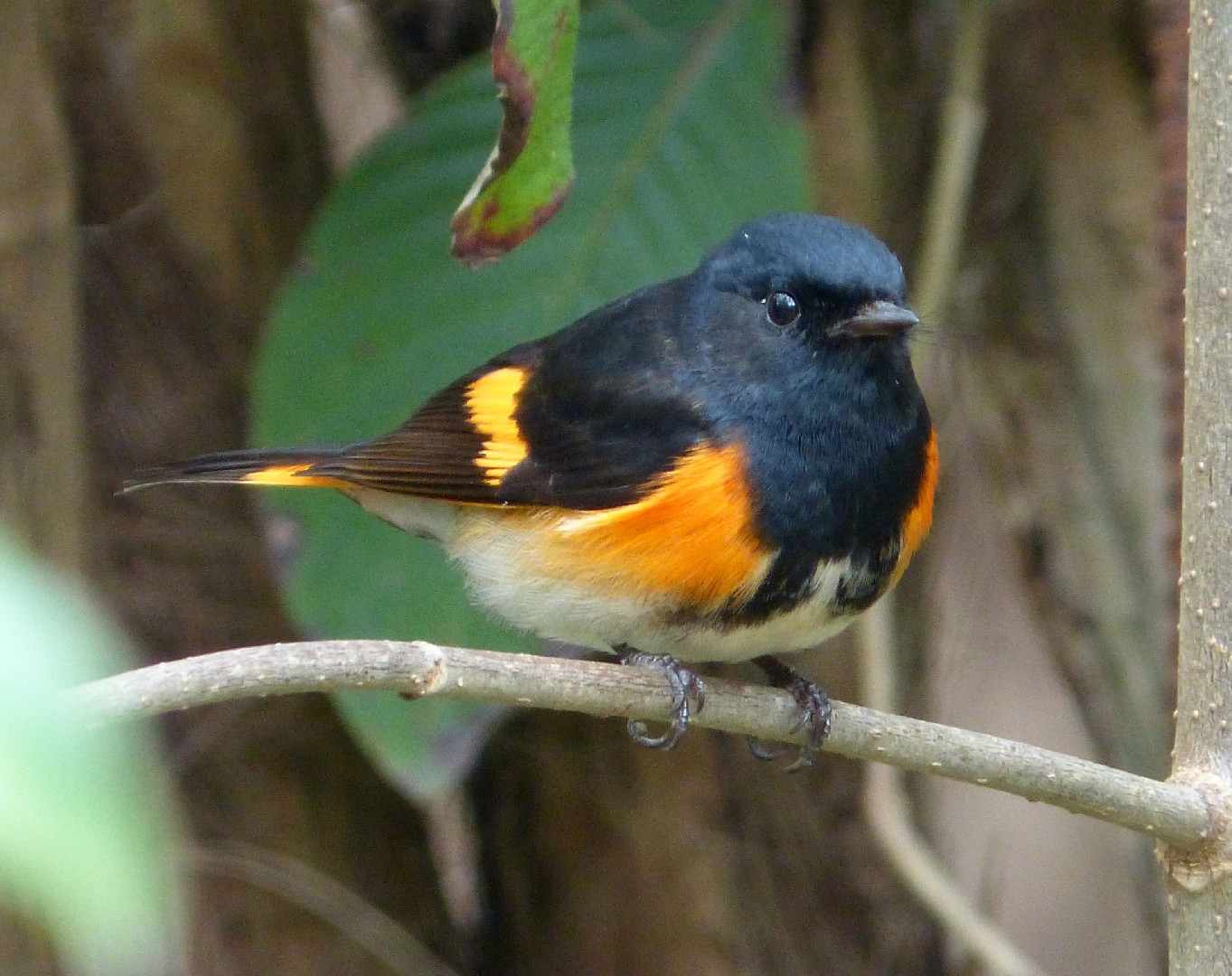American Redstart
A species of Setophaga Warblers Scientific name : Setophaga ruticilla Genus : Setophaga Warblers
American Redstart, A species of Setophaga Warblers
Botanical name: Setophaga ruticilla
Genus: Setophaga Warblers
Content
Description People often ask General Info
Description
The american Redstart is a small warbler that can be seen in a wide range of habitats. This energetic and acrobatic bird fans its tail, exposing bold, brilliant plumage that startles its prey. The male often mates with two females at the same time, "owning" two territories that are located near each other. Much more than any warbler, it behaves like a flycatcher, catching its prey in mid-air.
Size
11 - 14 cm
Life Expectancy
10 years
Nest Placement
Tree
Clutch Size
1 - 5 eggs
Number of Broods
10 - 13 days
Nestling Period
7 - 13 days
Feeding Habits
American Redstart primarily consumes insects like leafhoppers, flies, moths, wasps, and beetles by foraging across various canopy levels and employing a startle technique using their tail plumage. They also feed on small fruits and occasionally join mixed-species flocks to forage.
Habitat
American Redstart typically resides in open-canopy deciduous woodlands, especially during breeding season, where they favor second growth and forest edges. These birds prefer environments with an abundance of shrubs, often near bodies of water. American Redstart breeds in regions with alder and willow thickets, orchards, mixed woodlands, and prefers large, uninterrupted tracts of forest. In the west, they utilize riverside woods and coniferous forests. Altitudinally adaptable, they winter in low to mid-elevation tropical areas including mangroves, plantations, and urban green spaces.
Nest Behavior
For american Redstart, nest building is a female task, taking 3-7 days. Nest sites are evaluated during courtship, and once selected, the female weaves the nest.
Nest Characteristics
The nest of american Redstart is a well-camouflaged, tightly woven cup supported by a tree trunk and stems. It's constructed with materials like bark, grasses, and feathers, measuring 2–3 inches in width and height, with an inner cup 2 inches across and 1.5 inches deep.
Dite type
Insectivorous
People often ask
General Info
Feeding Habits
Bird food type
Bird Feeder Type

Small Tube Feeder

Platform
Sounds
Call
Recording location: United States
Song
Recording location: United States
Behavior
American Redstart exhibits intricate territorial and mating behaviors, including song, posturing, and circular aerial displays by males to defend territory. Both sexes occasionally engage in non-lethal physical skirmishes and share nestling-feeding duties. The species practices sequential monogamy, with the male attracting a new mate while provisioning for the first brood. Post-fledging, parents split chick-feeding responsibilities. Predation risks include raptors for adults and various predators for eggs and nestlings.
Distribution Area
Their breeding is in North America, spanning southern Canada and the eastern United States. They are migratory, wintering in Central America, the West Indies, and northern South America, and are very rare vagrants to western Europe. 
Species Status
Successful conservation efforts of the redstart, as for any other migrating bird, include protecting and providing habitat throughout its entire range. The benefits to coffee farms that redstarts and other "coffee birds" provide have encouraged coffee farmers to adapt shade trees and adjacent forest patches in their farming practices as additional habitat for the birds. Still, the most effective method for American redstart conservation would be natural habitat preservation at wintering and breeding grounds. 
Scientific Classification
Phylum
Chordates Class
Birds Order
Perching birds Family
New world warblers Genus
Setophaga Warblers Species
American Redstart 